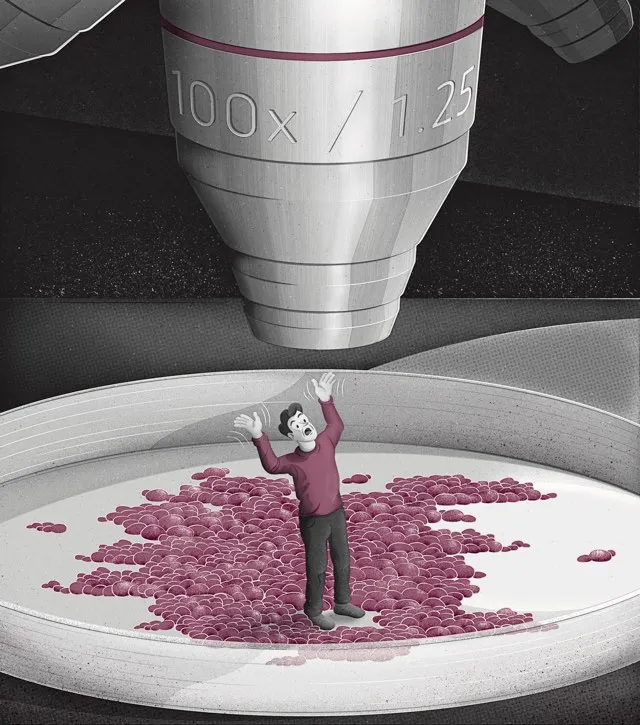
There are more bacterial cells in your body than human cells, but the ratio isn’t as extreme as once thought. A 2016 study at the Weizmann Institute of Science in Israel found that our total cell count is 56 per cent bacteria (compared with earlier estimates of 90 per cent). And because bacteria are much smaller, their total mass is only about 200g.Soby weight, we are more than 99.7 per cent human.
Even so, we shouldn’t underestimate the contribution bacteria make to our body, nor feel threatened by it. Most of our ‘human’ cells contain structures called mitochondria, which we rely on to convert glucose into compounds we can use for energy.
These mitochondria probably began as free-living bacteria before they embarked on a symbiotic relationship with us. The only reason that we don’t include them in our tally of bacteria is that they never leave the confines of human cell membranes, though they are, in many respects, independent organisms with their own DNA.
Like all multicellular animals, we can’t easily point to individual components and say “This is part of me, and this is not”. Your body is like a city – it has a collective identity that goes beyond its individual inhabitants. The pigeons and squirrels that call London home are just as much a part of it as the humans who live there.
Read more:
- Does washing your hands get rid of bacteria?
- Could we survive in a world without microbes?
- Are any bacteria visible to the naked eye?
- How long can bacteria live on a doorknob?
